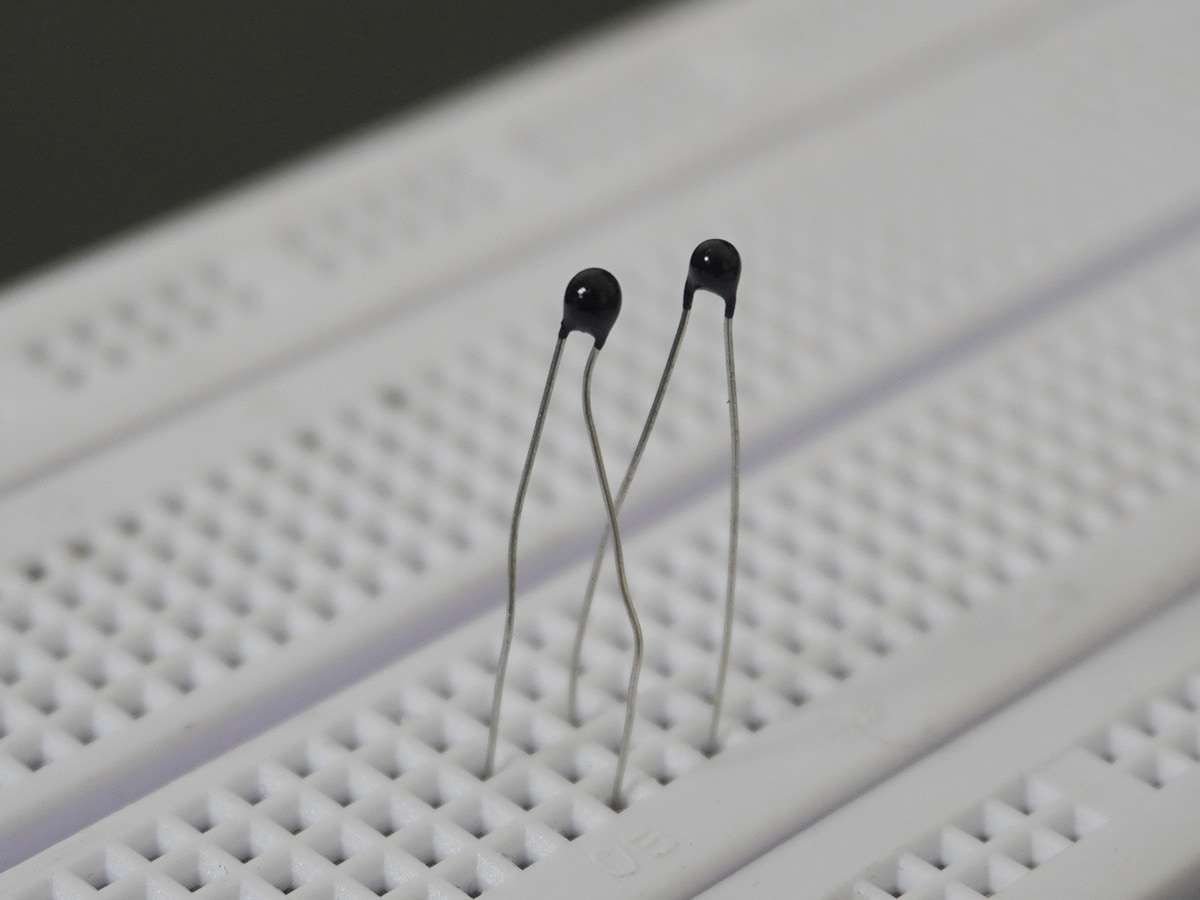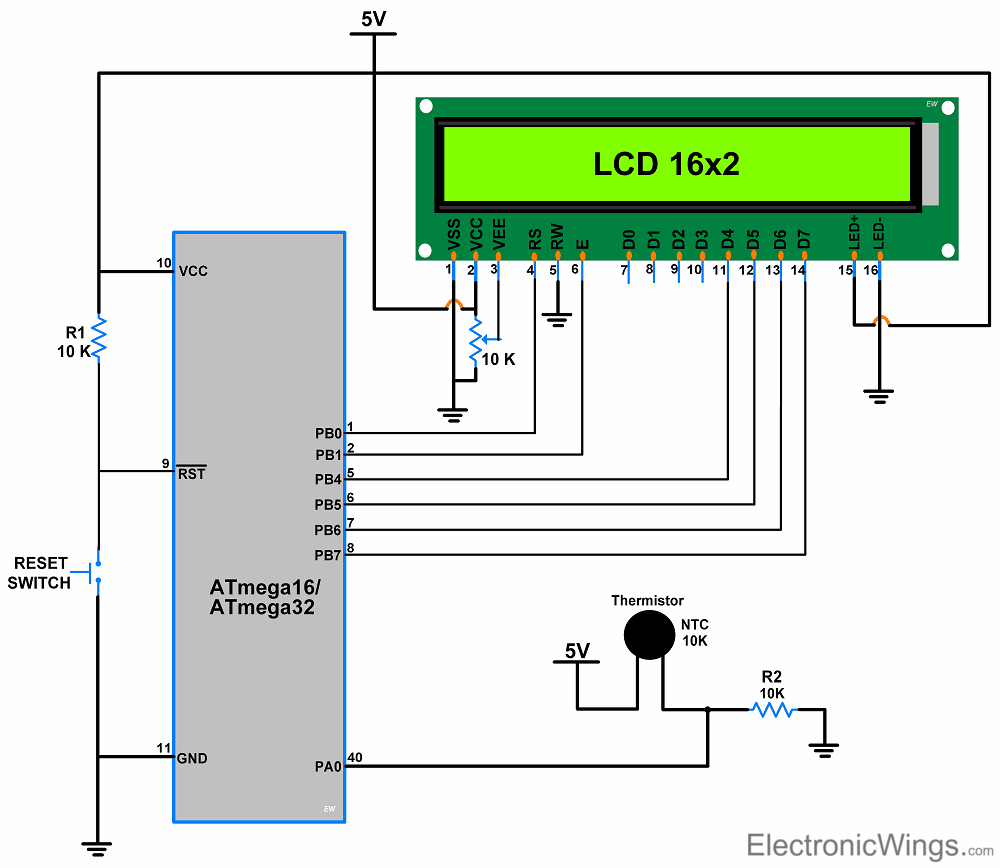Overview of Thermistor

A thermistor is a variable resistance element, whose resistance changes with a change in temperature.
The resistance increases with an increase in temperature for PTC (Positive Temperature Coefficient) type thermistors.
The resistance decreases with an increase in temperature for NTC (Negative Temperature Coefficient) type thermistors.
They can be used as current limiters, temperature sensors, overcurrent protectors, etc.
The change in resistance value is a measure of the temperature.
By using the thermistor in series with a fixed resistance forming a simple voltage divider network, we can find out the temperature by the change in voltage of the voltage divider network due to a change in temperature. (Temperature change leads to change in resistance which leads to change in voltage.)
For more information about the thermistor and how to use it, refer to the topic NTC Thermistor in the sensors and modules section.
For information about ADC in ATmega16 and how to use it, refer to the topic ADC in AVR ATmega16/ATmega32 in the ATmega inside section.
Connection Diagram of NTC Thermistor with ATmega16/32
- In the below circuit diagram, we used an NTC type 10K thermistor.

NTC Thermistor Code for ATmega16/32
/*
* ATmega16_Thermister.c
*
* http://www.electronicwings.com
*/
#define F_CPU 8000000UL
#include <avr/io.h>
#include <util/delay.h>
#include <string.h>
#include <stdio.h>
#include <stdlib.h>
#include <math.h>
#include "LCD16x2_4bit.h"
int val;
long R;
double Thermister;
void ADC_Init()
{
DDRA=0x00; /* Make ADC port as input */
ADCSRA = 0x87; /* Enable ADC, fr/128 */
}
int adc()
{
ADMUX = 0x40; /* Vref: Avcc, ADC channel: 0 */
ADCSRA |= (1<<ADSC); /* start conversion */
while ((ADCSRA &(1<<ADIF))==0); /* monitor end of conversion interrupt flag */
ADCSRA |=(1<<ADIF); /* set the ADIF bit of ADCSRA register */
return(ADCW); /* return the ADCW */
}
double getTemp()
{
val = adc(); /* store adc value on val register */
R=((10230000/val) - 10000);/* calculate the resistance */
Thermister = log(R); /* calculate natural log of resistance */
/* Steinhart-Hart Thermistor Equation: */
/* Temperature in Kelvin = 1 / (A + B[ln(R)] + C[ln(R)]^3) */
/* where A = 0.001129148, B = 0.000234125 and C = 8.76741*10^-8 */
Thermister = 1 / (0.001129148 + (0.000234125 * Thermister) + (0.0000000876741 * Thermister * Thermister * Thermister));
Thermister = Thermister - 273.15;/* convert kelvin to °C */
return Thermister;
}
int main(void)
{
char array[20],ohm=0xF4;
double temp;
LCD_Init(); /* initialize 16x2 LCD */
ADC_Init(); /* initialize ADC */
LCD_Clear(); /* clear LCD */
LCD_String_xy(0, 0,"Temp: ");
LCD_String_xy(1, 0, "R: ");
while(1)
{
temp = getTemp();/* store temperature value on temp resistor */
memset(array,0,20);
dtostrf(temp,3,2,array);
LCD_String_xy(0, 7,array);
LCD_Char(0xDF); /* ASCII value of '°' */
LCD_String("C ");
memset(array,0,20);
sprintf(array,"%ld %c ",R,ohm);
LCD_String_xy(1, 3,array);
_delay_ms(1000);/* wait for 1 second */
}
}
Video of Temperature Measurement using NTC Thermistor with ATmega16/32
Components Used |
||
|---|---|---|
| ATmega 16 ATmega 16 |
X 1 | |
| Atmega32 Atmega32 |
X 1 | |
| Thermistor Thermistor is a type of resistor whose resistance changes in accordance with change in temperature. It is used to measure the temperature over small range typically -100 °C to 300 °C. |
X 1 | |
| LCD16x2 Display LCD16x2 Display |
X 1 | |
